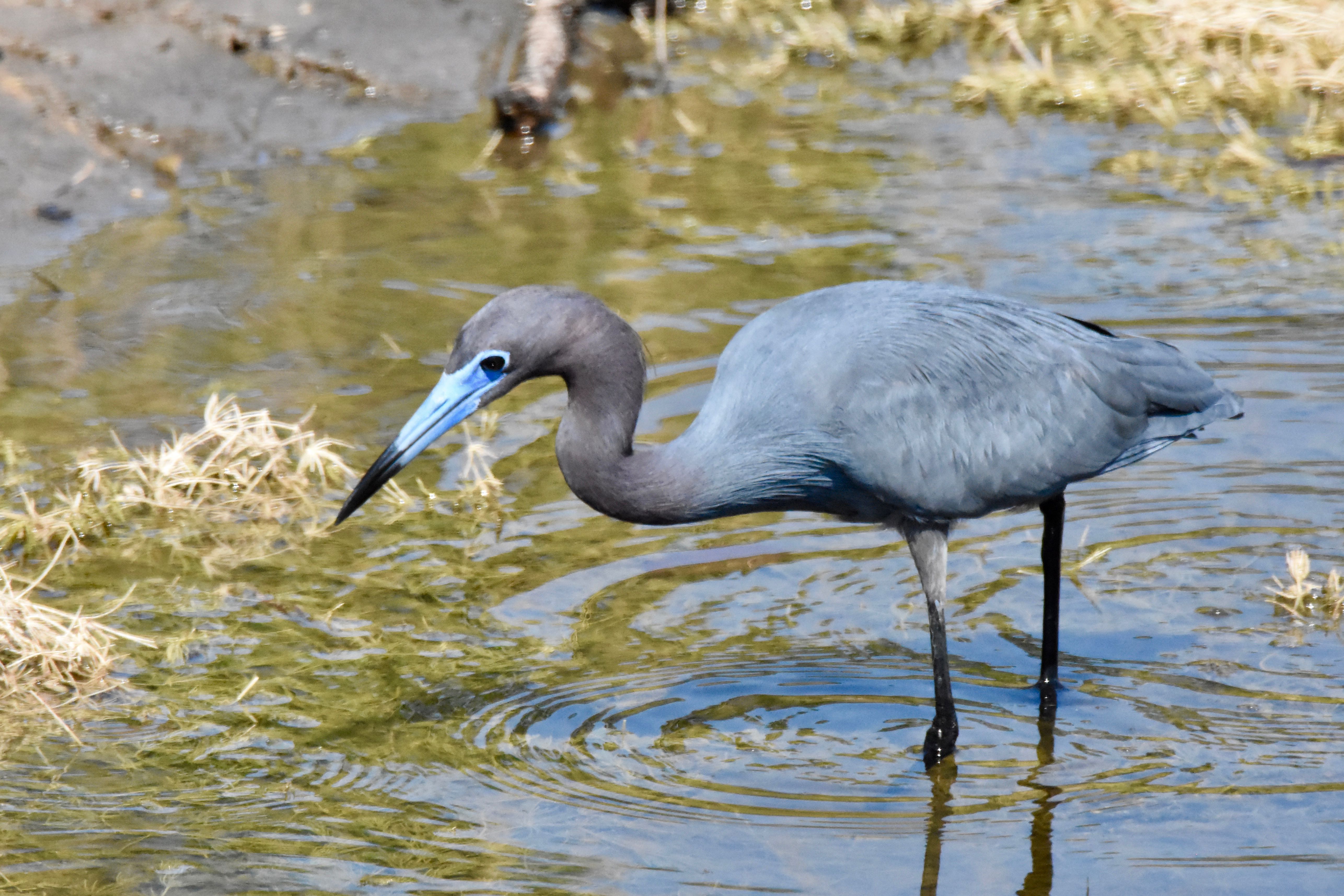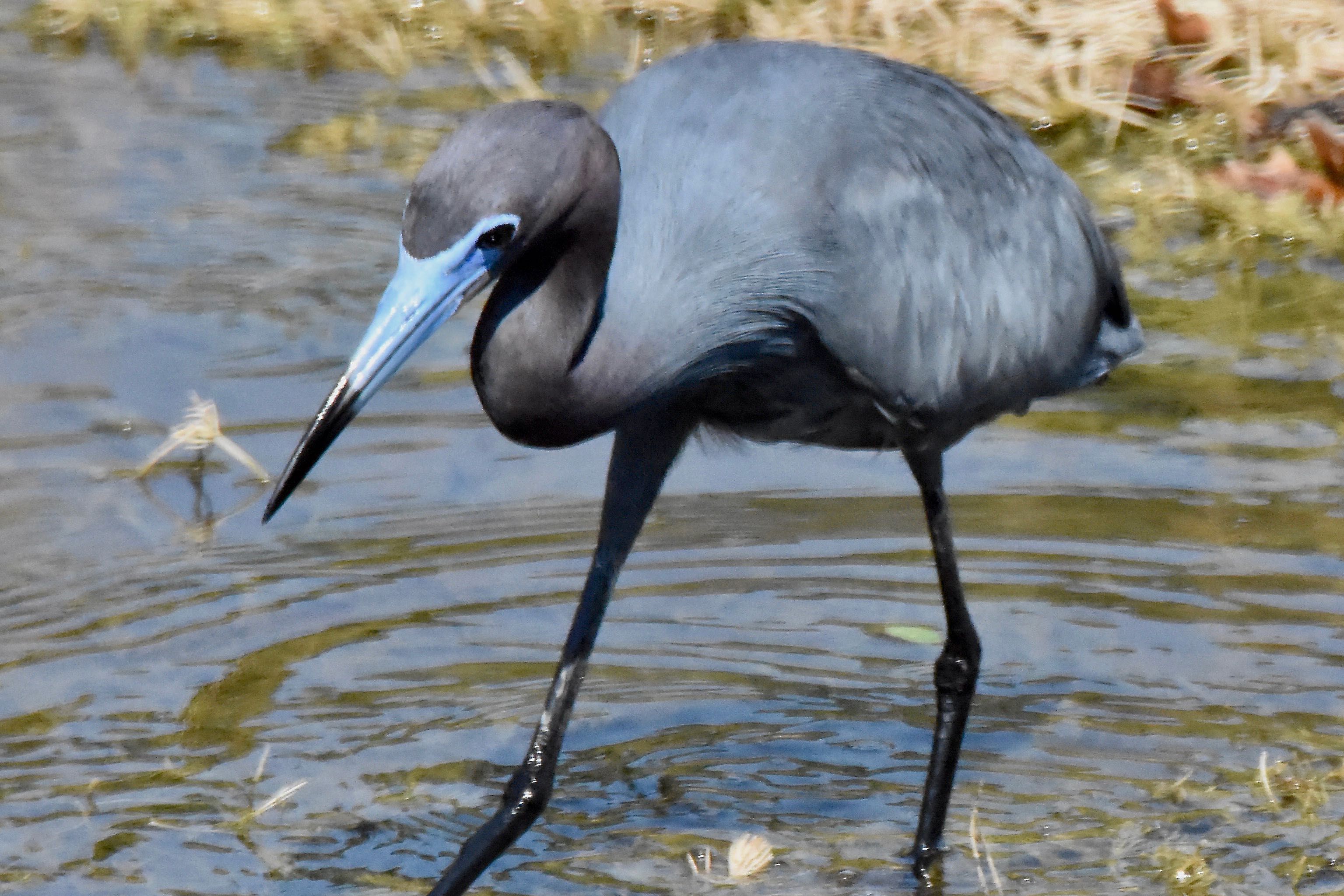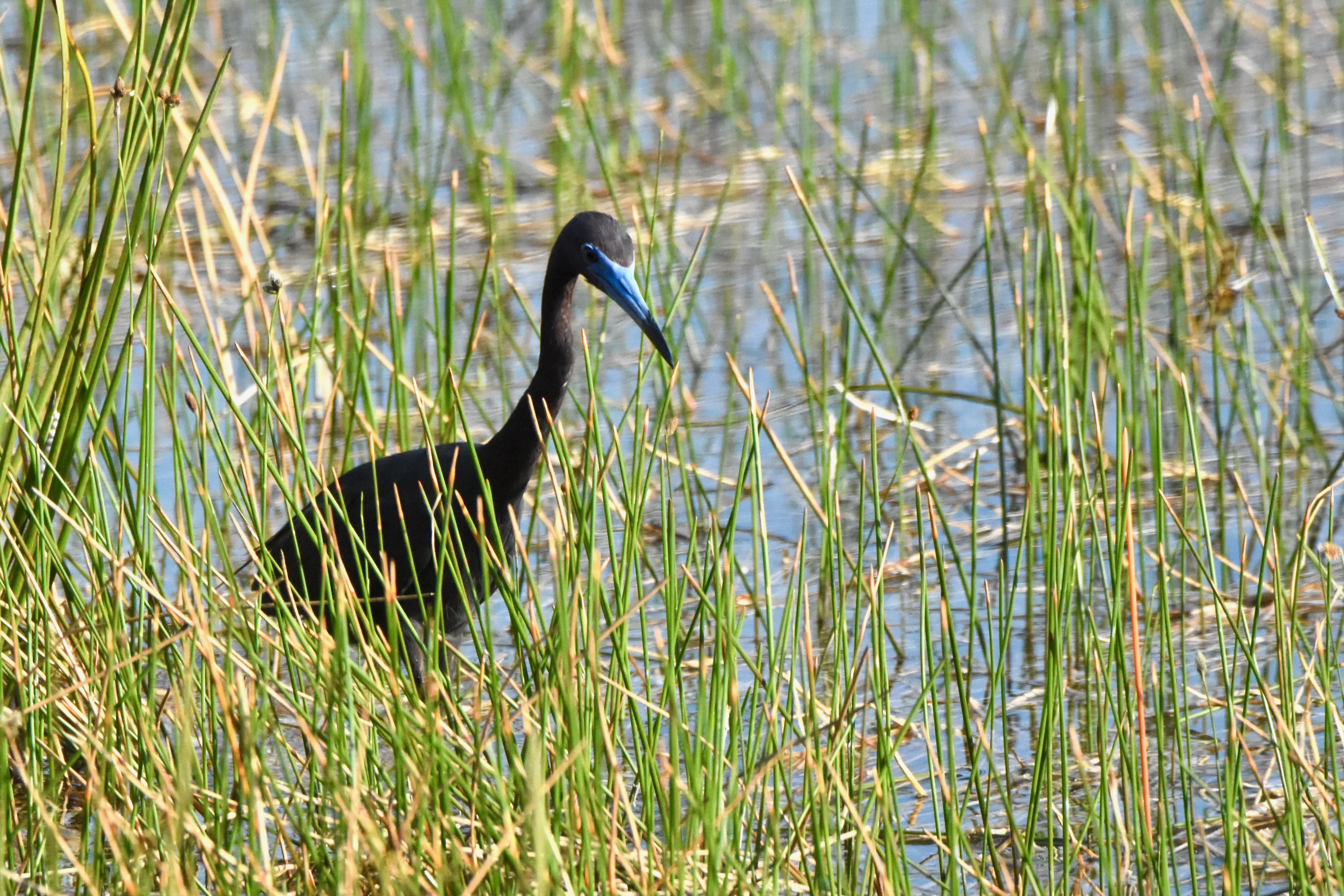
Little blue heron, photographed at North Jupiter Flatwoods Natural Area, Jupiter, Palm Beach County, in March 2018.
If you have trouble spotting the green in the green heron, you’ll appreciate the unambiguously blue little blue heron, Egretta caerulea. At least that’s the case when the little blue is fully mature, not so much as juveniles. But we’ll talk about that in a bit.
It’s a medium-sized heron, similar in build to tricolored herons and snowy egrets. The neck and upper body have a little red or purple mixed in, more in some individuals than others. They are members of Ardeidae, the heron, egret and bittern family.
The little blue is a year-round resident of Florida and coastal areas in the Southeast from Texas to the Carolinas and southward through Mexico, the Caribbean, Central America and much of South America. A portion of the U.S. population is migratory, summering as far north, roughly, as the Ohio River Valley.
It's a wader, found in marshes, the edges of ponds and other wet habitats. They are mostly found in freshwater settings, but do take to saltwater as well. It will stalk slowly in shallows for prey — a fish, a shrimp or aquatic bug — or stand perfectly still, waiting to strike when a meal wanders by. Frogs, lizards, snakes and turtle are also on their menu.
Little blues can have a body length of 30 inches and a wingspan of four-and-a half-feet. Adults are dark, but juveniles are pure white, gradually turning blue over the span of a year. In between, they can look like a bad bleach job on an old pair of jeans. Juveniles resemble snowy egrets, but the blues have a white bill with a blue tinge, as opposed to the snowy's black and orange bill. Adults resemble the tricolored heron, but tricolors have an orange bill and a white patch that runs down the neck to the belly.
Little blues nest in trees and shrubs, sometimes in tree islands populated by other wading birds. The male establishes and defends a territory in which the nest will be built. Both males and females do the construction work, although males will gather most of the material and females will do most of the assembly. The nest itself is a stick platform.
Females lay three or four eggs; both parents incubate the eggs, which hatch in roughly three weeks. Both also feed the young. Chicks can walk about the nest site in about a week, take short flights in about four weeks and are fully flight-capable in six or seven.
Little blues lack the spectacular plumage that made many of their cousins targets of hunters during the late 19th and early 20th centuries. Demand for feathers to feed the fashion industry decimated many other egrets and herons until the practice was banned. Still, little blue numbers have been in decline in recent decades because of loss of habitat, pollution and introduction of invasive plant species.
North Jupiter Flatwoods Natural Area



